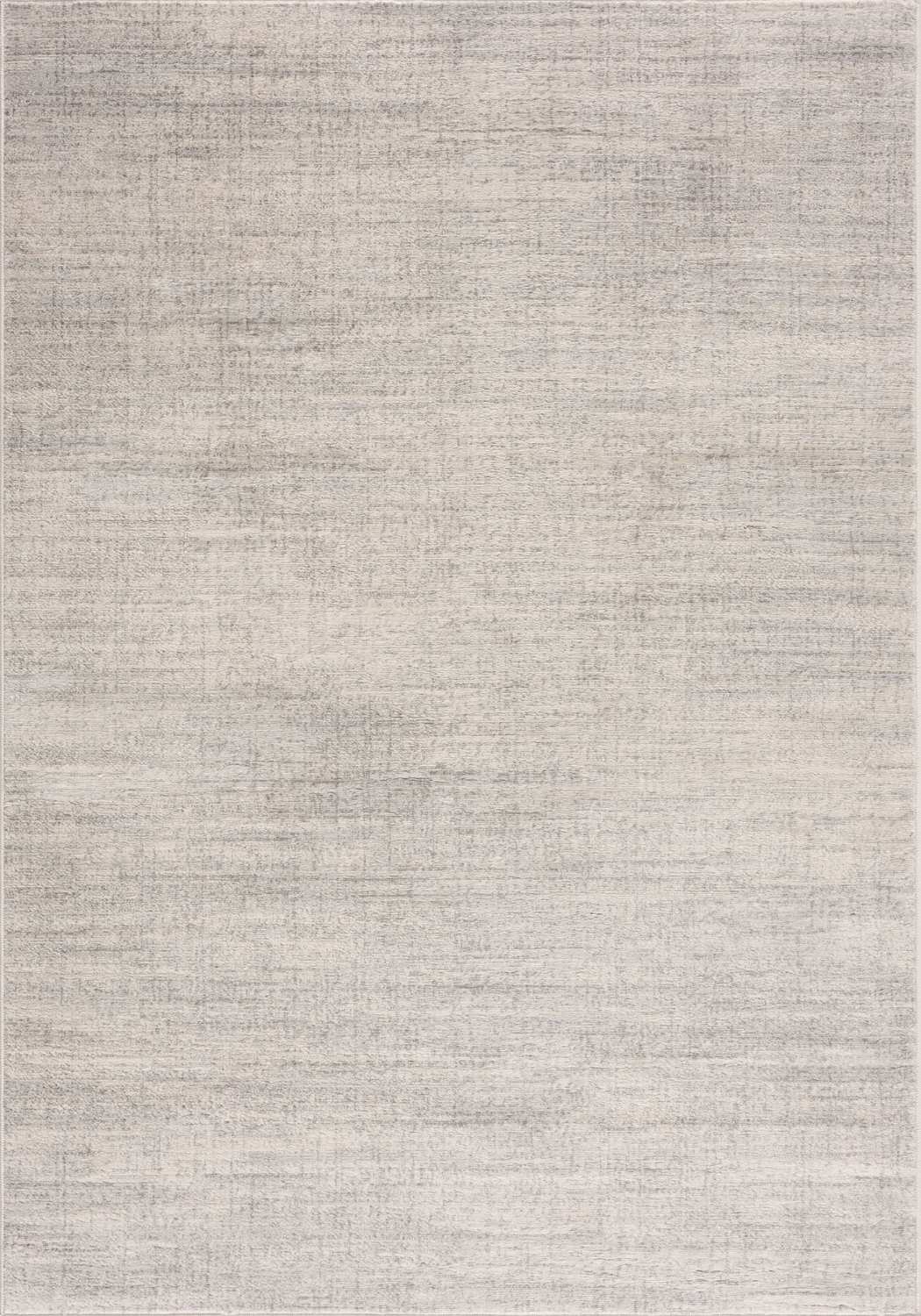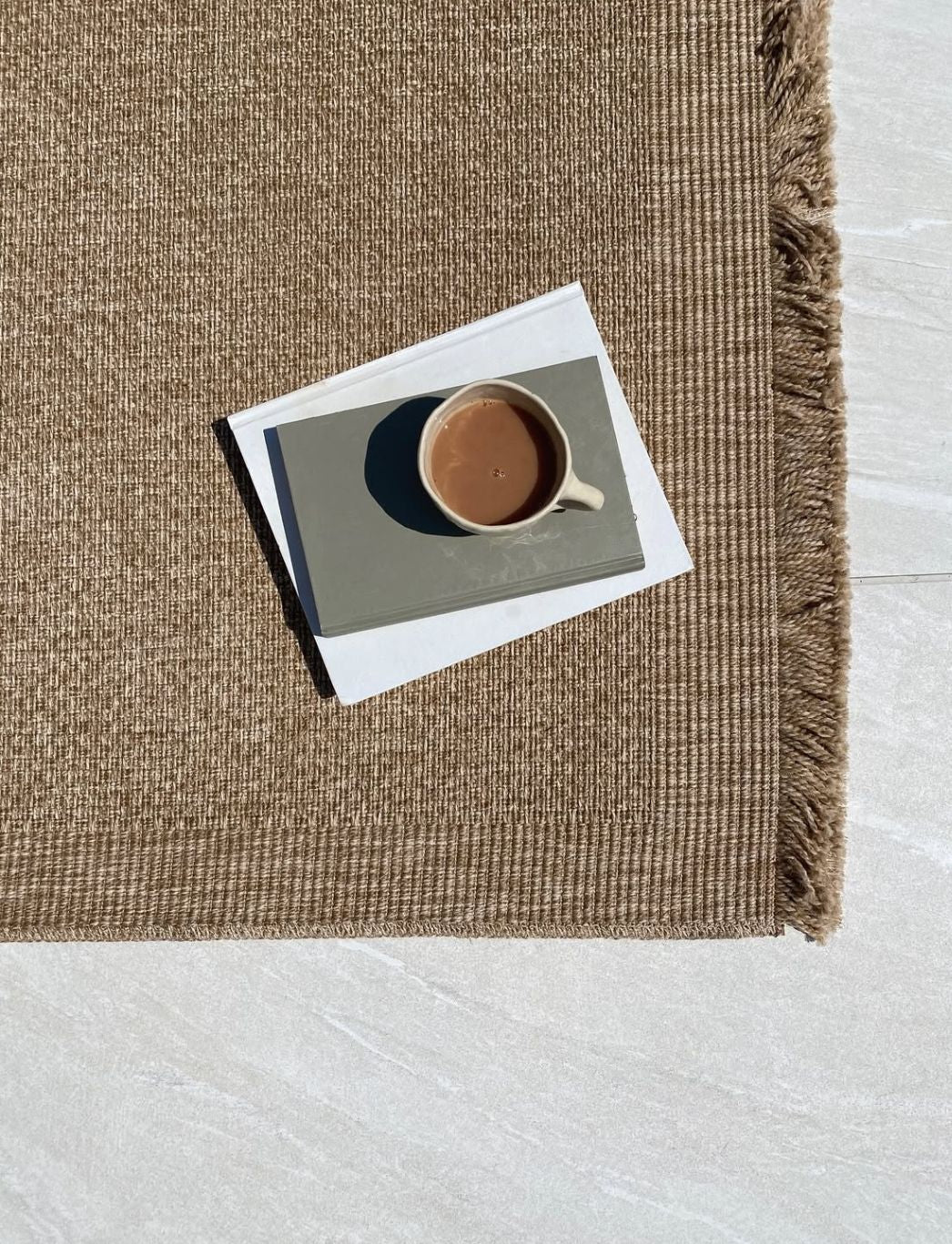How to Clean a Rug

Rugs are excellent décor pieces that tie the whole look of a space together. More importantly, they are cozy and essential for making a living space into a home. It is, however, also necessary to realize that rugs, especially the thick kind, have a penchant for accumulating all types of dirt, debris, and germs due to spills and human and pet foot traffic. While you may regularly vacuum your rug, it is essential to deep clean it every once in a while, even if it may look clean on the outside. Area rugs are especially prone to hide dirt deep in their recesses which may lead to harmful health effects for people.
Roll up your sleeves and prepare to scrub out tons of grime and dirt from your beloved rugs by following these easy steps that help you clean your area rugs all by yourself:
The Ultimate Guide to Deep Cleaning Your Rug: 8 Essential Steps
1) Identify The Material of Your Rug
As home décor enthusiasts know, no two rugs are the same. There are several different kinds of rugs and can be classified according to design, material, size, etc. To deep clean your rug, you first need to identify the material your rug is made out of. Different types of materials have different densities and might need to be handled differently during cleaning. For example, woven and braided rugs need gentle hand washing not to destroy their weave.
2) Get Your Cleaning Supplies Ready
Once you know how to handle your rug, it is time to collect the tools needed to scrub your rug to perfection. It would help if you had the following basic cleaning products and tools to clean your rug:
- Rug Shampoo, if you don’t have a specialized rug cleaning product, then you can also use common dish soap
- A brush, soft bristle is recommended to protect the rug.
- Bucket
- Tons and tons of water, rug cleaning is a very wet process. Prepare to get drenched.
3) Set Up An Outdoor Station
Check the weather forecast before scheduling your rug cleaning, as it is an activity that is done outdoors. Pick a dry spot outside and hang up your rug to clean it thoroughly. Use a sturdy support structure to hang the rug as they tend to be quite heavy.
4) Vacuum The Rug
While you might be hand cleaning the carpet, it is always a good idea to take a machine’s help to accelerate the process. Use a vacuum to suck out most of the dirt stuck deep into the recesses of the rug. Thoroughly vacuum both sides of the rug to remove most of the dirt. You can also give the rug a few good old-fashioned whacks and beat the dirt out to be on the safe side.
5) Apply The Shampoo to The Rug
Mix the rug shampoo with water according to any instructions provided on the packaging. Rinse the rug with water to prepare it for shampoo application. Doing a patch test on the rug with your shampoo is always better, as some shampoo might cause the rug’s colours to run. Apply the shampoo to the wet rug. Use the brush sturdily to work the shampoo deep into the rug’s fibers. Work the shampoo into a lather and clean for at least a good 10 minutes.
6) Rinse The Rug
After scrubbing the rug with a brush, leave the shampoo on it for the amount of time directed on the packaging. After the desired time, wash away the shampoo with lots of water. For ease, you can use a garden hose to wash off the shampoo. Make sure all the shampoo is rinsed out as any residue will damage the rug.
7)Remove Excess Water
Try and wring the rug to remove as much excess water as possible. You can use the wet-dry option on a vacuum to expedite the process.
8) Let it Dry
The last step is to simply let the rug dry. You can hang the rug outside in the sunshine or in an indoor space to protect it from the outside elements. Rugs are quite dense. Therefore, it may take more than a day to dry thoroughly.
Deep Cleaning Rugs - Methods and Techniques
While regular vacuuming and spot cleaning are essential, periodic deep cleaning is necessary to thoroughly remove embedded dirt, allergens, and odors from your rug. Depending on the rug type and your personal preferences, you can choose from various deep cleaning methods:
-
Shampooing: This method involves using a specialized rug shampoo and a brush or machine to agitate the fibers and lift deep-seated dirt. Shampooing is suitable for synthetic and some natural fiber rugs.
-
Steam Cleaning: A steam cleaning machine injects hot water and a cleaning solution into the rug's fibers, then extracts the dirty solution, leaving the rug clean and refreshed. This method is effective for a wide range of rug types.
-
Dry Cleaning: Dry cleaning, often performed by professional rug cleaning services, uses a solvent-based cleaning solution to clean delicate rugs, such as wool or silk, without the use of water.
-
Foam Cleaning: This method applies a foaming cleaning solution to the rug, which is then agitated and extracted, leaving the rug with minimal moisture.
Regardless of the deep cleaning method you choose, be sure to follow the manufacturer's instructions and test any cleaning solutions in an inconspicuous area to ensure compatibility with your rug's material.
DIY Rug Cleaning Solutions
For those who prefer a more hands-on approach, you can create your own effective rug cleaning solutions using common household ingredients. Here are a few DIY options to consider:
-
Baking Soda and Vinegar: Mix equal parts baking soda and white vinegar to create a gentle, yet powerful, cleaning solution. Sprinkle the mixture onto the rug, let it sit for a few minutes, then vacuum it up.
-
Castile Soap and Water: Combine a few drops of unscented castile soap with warm water in a spray bottle. Lightly mist the rug and gently blot with a clean cloth.
-
Hydrogen Peroxide and Dish Soap: Mix one part hydrogen peroxide with one part dish soap and a few drops of water. Use this solution to spot clean stains and spills.
-
Cornstarch and Essential Oils: Sprinkle cornstarch over the rug and let it sit for several hours, then vacuum. You can also add a few drops of your favorite essential oil to the cornstarch for a refreshing scent.
Always test any DIY cleaning solutions in an inconspicuous area of the rug to ensure they don't cause any discoloration or damage.

Deep Cleaning Rugs - Methods and Techniques
While regular vacuuming and spot cleaning are essential, periodic deep cleaning is necessary to thoroughly remove embedded dirt, allergens, and odors from your rug. Depending on the rug type and your personal preferences, you can choose from various deep cleaning methods:
-
Shampooing: This method involves using a specialized rug shampoo and a brush or machine to agitate the fibers and lift deep-seated dirt. Shampooing is suitable for synthetic and some natural fiber rugs.
-
Steam Cleaning: A steam cleaning machine injects hot water and a cleaning solution into the rug's fibers, then extracts the dirty solution, leaving the rug clean and refreshed. This method is effective for a wide range of rug types.
-
Dry Cleaning: Dry cleaning, often performed by professional rug cleaning services, uses a solvent-based cleaning solution to clean delicate rugs, such as wool or silk, without the use of water.
-
Foam Cleaning: This method applies a foaming cleaning solution to the rug, which is then agitated and extracted, leaving the rug with minimal moisture.
Regardless of the deep cleaning method you choose, be sure to follow the manufacturer's instructions and test any cleaning solutions in an inconspicuous area to ensure compatibility with your rug's material.
DIY Rug Cleaning Solutions
For those who prefer a more hands-on approach, you can create your own effective rug cleaning solutions using common household ingredients. Here are a few DIY options to consider:
-
Baking Soda and Vinegar: Mix equal parts baking soda and white vinegar to create a gentle, yet powerful, cleaning solution. Sprinkle the mixture onto the rug, let it sit for a few minutes, then vacuum it up.
-
Castile Soap and Water: Combine a few drops of unscented castile soap with warm water in a spray bottle. Lightly mist the rug and gently blot with a clean cloth.
-
Hydrogen Peroxide and Dish Soap: Mix one part hydrogen peroxide with one part dish soap and a few drops of water. Use this solution to spot clean stains and spills.
-
Cornstarch and Essential Oils: Sprinkle cornstarch over the rug and let it sit for several hours, then vacuum. You can also add a few drops of your favorite essential oil to the cornstarch for a refreshing scent.
Always test any DIY cleaning solutions in an inconspicuous area of the rug to ensure they don't cause any discoloration or damage.

Rug Cleaning Methods: Effective Techniques for Pristine Floor Coverings
Maintaining the beauty and longevity of your rugs requires proper cleaning methods. Regular vacuuming is essential for removing surface dirt and debris. For deeper cleaning, consider steam cleaning or dry cleaning, depending on the rug's material and construction. Spot cleaning is crucial for addressing spills and stains promptly. For delicate or antique rugs, professional cleaning is often the safest option. Always check the manufacturer's care instructions before applying any cleaning method to ensure the best results and prevent damage to your valuable floor coverings.
Carpet Cleaning Methods: Revitalising Your Home's Flooring
Keeping your carpets clean enhances both the appearance and hygiene of your home. Hot water extraction, also known as steam cleaning, is highly effective for deep cleaning. Dry cleaning methods, using specialised compounds, are ideal for quick turnaround times. Bonnet cleaning is suitable for light maintenance of commercial carpets. For eco-conscious households, encapsulation cleaning offers a low-moisture option. Regular vacuuming remains the foundation of carpet care, ideally performed several times a week. Always tailor your cleaning method to your carpet's specific needs and material composition.
Carpet Cleaning Methods at Home: DIY Techniques for Spotless Floors
Maintaining clean carpets at home is achievable with the right techniques. Baking soda is excellent for deodorising; simply sprinkle, leave overnight, and vacuum thoroughly. For spot cleaning, a mixture of white vinegar and water can effectively tackle many stains. Carpet shampoos designed for home use offer a deeper clean when used with a rented machine. Steam mops provide a chemical-free option for refreshing carpets. Remember to test any cleaning solution on an inconspicuous area first to prevent discolouration or damage.

Upholstery Cleaning Methods: Refreshing Your Furniture's Fabric
Proper upholstery cleaning maintains the appearance and extends the life of your furniture. Vacuuming with an upholstery attachment is the first step in regular maintenance. For water-safe fabrics, a mixture of mild dish soap and warm water can be effective for spot cleaning. Dry cleaning solvents are suitable for delicate fabrics or those marked with a 'W' cleaning code. Steam cleaning offers a deep clean for sturdy fabrics. Always check the manufacturer's care label and test cleaning solutions on a hidden area before applying to the entire piece.
Carpet Cleaning Method Statement: Professional Approach to Floor Care
A comprehensive carpet cleaning method statement outlines the professional approach to maintaining floor coverings. It typically includes a detailed risk assessment to identify potential hazards. The statement should specify the cleaning products and equipment to be used, ensuring they are appropriate for the carpet type. It outlines the step-by-step cleaning process, from pre-inspection to post-cleaning care. Health and safety measures for both cleaners and occupants are crucial components. A thorough method statement also includes quality control procedures to ensure consistent, high-standard results.
Rug Cleaning Solution: Effective Formulas for Various Fibres
Choosing the right rug cleaning solution is crucial for maintaining your floor coverings. For synthetic rugs, a mixture of warm water and mild detergent is often sufficient. Natural fibre rugs may require specialised solutions; for example, wool-safe cleaners are essential for wool rugs. Enzyme-based cleaners are effective for organic stains and odours. For delicate or antique rugs, pH-neutral solutions are safest. Always dilute concentrated cleaners according to manufacturer instructions and test on an inconspicuous area before applying to the entire rug.

Rug Cleaning Solution DIY: Homemade Remedies for Fresh Floor Coverings
Creating your own rug cleaning solution can be both effective and economical. A simple mixture of white vinegar and water (1:3 ratio) works well for general cleaning and deodorising. For tougher stains, a paste made from baking soda and water can be gently worked into the fibres. A solution of warm water and mild dish soap is suitable for most synthetic rugs. For a natural deodoriser, sprinkle dried herbs like rosemary or lavender before vacuuming. Always test homemade solutions on a small, hidden area first to ensure they won't damage or discolour your rug.
Rug Cleaning Solution Homemade: Natural Alternatives for Spotless Rugs
Homemade rug cleaning solutions offer natural, cost-effective alternatives to commercial products. A mixture of equal parts water and white vinegar is excellent for general cleaning and odour removal. For spot cleaning, create a paste with baking soda and water, apply to the stain, let dry, and vacuum. A solution of warm water and mild castile soap is gentle enough for most rug fibres. For a deep clean, mix warm water, white vinegar, and a few drops of essential oil for a fresh scent. Always blot stains, never rub, and test any homemade solution on an inconspicuous area before full application.
Rug Cleaning Techniques: Professional Methods for Home Use
Mastering rug cleaning techniques can help maintain your floor coverings between professional cleanings. Vacuuming both sides of the rug removes embedded dirt and prevents wear. For deep cleaning, snow cleaning (in appropriate climates) involves laying the rug face down on fresh snow and beating it to release dirt. Dry shampooing with a specialised powder cleaner is effective for quick refreshes. For water-safe rugs, steam cleaning provides a deep clean. Always brush the pile in its natural direction after cleaning to restore texture. Remember to clean in the direction of the nap to prevent damage to delicate fibres.
People Also Asked
How do you clean a rug by yourself?
To clean a rug yourself, start by thoroughly vacuuming both sides. For spot cleaning, use a mixture of mild detergent and warm water. For overall cleaning, consider using a rented carpet cleaner or hiring professional services for delicate rugs.
What is the best thing to clean a rug with?
The best cleaning solution for most rugs is a mixture of warm water and mild dish soap. For natural fiber rugs, a solution of white vinegar and water can be effective and gentle on the fibers.
What is the best way to clean a rug by hand?
Clean a rug by hand using a soft-bristled brush and a solution of mild detergent and warm water. Gently scrub in circular motions, rinse thoroughly with clean water, and allow to air dry completely.
How do you clean a fabric rug?
Clean fabric rugs by vacuuming regularly and spot-cleaning stains immediately. For deeper cleaning, use a fabric-safe cleaner or consider professional cleaning services for delicate materials.
How do you clean a rug without washing it?
To clean a rug without washing, vacuum thoroughly, use dry carpet shampoo, or sprinkle baking soda to absorb odors. For spot cleaning, use a damp cloth with a mild detergent solution.
Can I clean a rug with soap and water?
Yes, you can clean a rug with soap and water. Use a mild dish soap or specialized rug shampoo mixed with warm water. Apply the solution gently, rinse thoroughly, and ensure the rug dries completely to prevent mold.
Should I wash a rug by itself?
Yes, it's best to wash a rug by itself to prevent color bleeding and ensure thorough cleaning. This also allows you to adjust the cleaning method to the rug's specific material and care requirements.
Can I steam clean my own rug?
Yes, you can steam clean your own rug using a rented or purchased steam cleaner. Always check the rug's care label first and follow the manufacturer's instructions to avoid damage.
How do you clean a rug that is not machine washable?
For non-machine washable rugs, vacuum thoroughly, spot-clean stains, and use a dry carpet shampoo. For overall cleaning, use a damp cloth with a mild detergent solution or consider professional cleaning services.
How to clean carpet by hand?
Clean carpet by hand using a soft-bristled brush and a solution of warm water and mild detergent. Work in small sections, rinse thoroughly, and use a clean, damp cloth to remove soap residue. Allow to air dry completely.
Can I clean my rug with vinegar?
Yes, you can clean your rug with vinegar. Mix equal parts white vinegar and water for a natural cleaning solution. This method is especially effective for deodorizing and removing light stains.
How do you self clean an area rug?
Self-clean an area rug by vacuuming thoroughly, spot-cleaning stains, and using a mixture of mild detergent and warm water for overall cleaning. For deeper cleaning, consider renting a carpet cleaner or using a steam cleaner.
How do you beat a rug to clean it?
Beat a rug by hanging it over a sturdy clothesline or railing. Use a rug beater or broom handle to firmly strike the rug, working from top to bottom. This helps dislodge deep-seated dirt and dust.
How to freshen a rug?
Freshen a rug by sprinkling baking soda over the surface, letting it sit for several hours, then vacuuming thoroughly. Use a fabric refresher spray or mix essential oils with water for a natural deodorizer.
How to clean a very dirty rug?
For a very dirty rug, start by vacuuming thoroughly. Then use a strong cleaning solution of rug shampoo or oxygen-based cleaner. For stubborn dirt, consider professional cleaning services or renting a heavy-duty carpet cleaner.
What is a natural carpet cleaner?
Natural carpet cleaners include white vinegar, baking soda, and salt. Mix equal parts vinegar and water for general cleaning, use baking soda to absorb odors, or create a paste with salt and vinegar for tough stains.
How to make a rug fluffy again?
Make a rug fluffy again by vacuuming thoroughly, then using a carpet rake or stiff brush to lift the fibers. For synthetic rugs, carefully use a steam cleaner to revitalize the pile.
How can I clean my rug by hand?
Clean your rug by hand using a soft-bristled brush and a solution of mild detergent and warm water. Gently scrub in circular motions, rinse thoroughly with clean water, and allow to air dry completely.
Can you wash your own rug?
Yes, you can wash your own rug, but always check the care label first. Small rugs can often be machine washed on a gentle cycle, while larger rugs may require hand washing or professional cleaning.
How do you wash a rug and dry it?
Wash a rug using a mild detergent solution and rinse thoroughly. To dry, squeeze out excess water without wringing, then lay flat or hang to air dry completely. Use fans to speed up drying and prevent mold growth.
How to clean a rug at home without a machine?
Clean a rug at home without a machine by vacuuming thoroughly, spot-cleaning stains, and using a mixture of mild detergent and warm water for overall cleaning. Use a soft-bristled brush to work the solution into the fibers, then rinse and air dry.
Is it safe to wash a rug?
It's generally safe to wash a rug, but always check the care label first. Some rugs may require special care or professional cleaning. For machine-washable rugs, use a gentle cycle and mild detergent.
Can I use dish soap on my rug?
Yes, you can use dish soap on your rug. Choose a mild, unscented dish soap and dilute it with warm water. This solution is effective for general cleaning and spot-treating stains on most rug types.
How can I clean my rug at home?
Clean your rug at home by vacuuming thoroughly, spot-cleaning stains with a mild detergent solution, and using a soft brush to work the cleaner into the fibers. For a deeper clean, consider steam cleaning or renting a carpet cleaner.
How do you clean a dirty rug without a machine?
Clean a dirty rug without a machine by sprinkling baking soda over the surface, letting it sit for several hours, then vacuuming. For tougher dirt, create a vinegar and water solution, apply with a sponge, and blot dry with clean cloths.
How do you clean a smelly rug?
Eliminate rug odors by sprinkling baking soda liberally, leaving it overnight, then vacuuming. For persistent smells, mix equal parts white vinegar and water in a spray bottle, lightly mist the rug, and allow it to air dry completely.
How to clean a rug by hand?
Hand-clean a rug by first vacuuming thoroughly. Mix a gentle detergent with warm water, apply with a soft brush, and work in small sections. Rinse with clean water and a sponge, then blot excess moisture with towels and air dry.
Is it OK to wash rugs?
Whether it's OK to wash rugs depends on the material and construction. Small, synthetic rugs are often machine washable. Larger or delicate rugs may require professional cleaning. Always check the care label for specific instructions.
How do you clean a 100% cotton rug?
Clean a 100% cotton rug by vacuuming regularly to prevent dirt buildup. For deeper cleaning, use a mild detergent and cool water solution, gently scrubbing with a soft brush. Avoid saturating the rug and allow it to air dry completely.
How to clean a hand-knotted rug?
Clean hand-knotted rugs carefully by vacuuming both sides to remove loose dirt. For spot cleaning, use a pH-neutral cleaner and blot gently. Avoid excessive moisture and consider professional cleaning for valuable or antique hand-knotted rugs.
How can I clean my rug at home by myself?
Clean your rug at home by first removing loose dirt with a thorough vacuuming. For general cleaning, use a mixture of mild soap and water, working in small sections with a soft brush. Rinse thoroughly and allow the rug to dry completely.
Does baking soda clean carpet?
Yes, baking soda can help clean carpets. It absorbs odors and can lift light stains. Sprinkle baking soda over the carpet, let it sit for several hours or overnight, then vacuum thoroughly. For tougher stains, make a paste with water and scrub gently.
How do you clean a very dirty area rug?
For a very dirty area rug, start by vacuuming both sides thoroughly. Create a solution of warm water and mild detergent, apply with a soft brush, and work in sections. For stubborn dirt, consider using a rented carpet cleaner or hiring a professional service.
Related Blog Posts
Related Rug Collections
All Rugs










Leave a comment